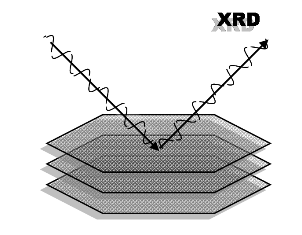
Measuring the composition of sediments on the X-ray Lab
The purpose of the X-ray lab is to carry out powder diffraction analyses of minerals and rock powders. X-ray diffraction (XRD) analyses allow the identification of minerals based on their atomic structure. During XRD analysis, X-ray beams reflect off parallel atomic layers within a mineral over a range of diffraction angles. Because the X-ray beam has a specific wavelength, there are only specific angles which the exiting rays will be detected and counted by the detectors. Like every person has their one unique set of fingerprints every mineral has a unique diffraction pattern that can be used for identification.
Based on this principle and using an X-ray diffractometer, scientists can evaluate the mineralogical composition of sediments and the alteration products of ocean crust material. As you know during this expedition we have been collecting mainly sediments from the seafloor. So we have been performing XRD analysis on one sample 2 cm3 per core. The sediment samples are frozen, freeze-dried to remove water, and ground by hand with an agate mortar and pestle.
After this procedure the prepared samples are top-mounted onto a sample holder and analyzed using a Bruker D-4 Endeavor diffractometer. When an X-ray beam hits a sample and is diffracted, we can measure the distances between the planes of the atoms that constitute the sample by applying Bragg’s Law.
A diffractogram is produced and peak identification is done graphically through Bruker’s evaluation software that is used for processing and analysis of XRD diffraction patterns and allows for mineral identification. In the figures below you can see a diffractogram, of a sample collected during this expedition, where the blue peaks correspond to quartz and the red peaks match calcite diffraction patterns.
